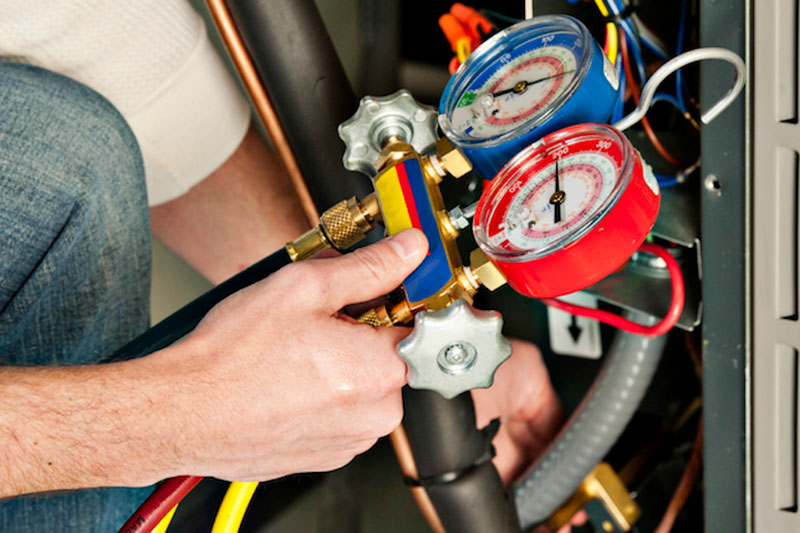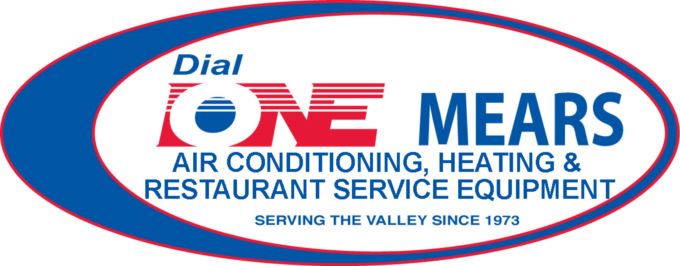
You might not think much about how your air conditioner works, but it depends on refrigerant to keep your home cold. This refrigerant is controlled by environmental laws, since it contains chemicals.
Depending on when your air conditioner was added to your home, it may need R-22, R-410A or R-32 refrigerant. We’ll go over the differences and which air conditioner refrigerants are being phased out in Phoenix, plus how these phaseouts affect you.
What’s R-22 and Why Is It Discontinued?
If your air conditioner was added before 2010, it probably uses Freon®. You can find out if your air conditioner has it by calling us at 602-789-3315. You can also examine the name plate on your air conditioner condenser, which is found outside your residence. This sticker will contain details on what model of refrigerant your AC uses.
Freon, which is also known as R-22, contains chlorine. Scientists consider R-22 to be damaging to the earth’s ozone layer and one that contributes to global warming. The Environmental Protection Agency, which controls refrigerants in the United States, outlawed its creation and import in January 2020.
I Use an Air Conditioner with R-22. Do I Need to Get a New One?
It varies. If your air conditioning is operating fine, you can continue to use it. With yearly air conditioner maintenance, you can expect your air conditioning to last around 15–20 years. However, the Department of Energy says that substituting a 10-year-old air conditioner could save you 20–40% on yearly cooling costs!
If you don’t replace your air conditioner, it can lead to a problem if you have to have air conditioning repair in the future, specifically for refrigerant. Repairs may be more expensive, as only reduced amounts of recycled and reclaimed R-22 is accessible.
With the phaseout of R-22, most new air conditioners now use Puron®. Also known as R-410A, this refrigerant was made to keep the ozone layer in good shape. Since it requires a varying pressure level, it doesn’t match air conditioners that need R-22 for cooling.
However, Puron still has the possibility to contribute to global warming. Because of that, it may also eventually be discontinued. Although it hasn’t been mandated yet for residential air conditioners, it’s likely sometime this decade.
What Refrigerant Will Take the Place of R-410A?
In preparation of the end, some brands have started using R-32 in new air conditioners. This refrigerant rates low for global warming possibility—approximately one-third less than R-410A. And it also reduces energy expenditure by about 10%, according to the Intergovernmental Panel on Climate Change’s Fourth Assessment Report. That’s savings that might be forwarded on to you through your energy costs.
Dial One Mears Air Conditioning & Heating Inc Can Assist with All Your Air Conditioning Needs
In short, the alterations to air conditioner refrigerant probably won’t affect you very much until you have to have repairs. But as we went over earlier, refrigerant repairs might be more costly because of the restricted levels on hand.
In addition to that, your air conditioner often stops working at the worst time, often on the warmest day when we’re receiving lots of other appointments for AC repair.
If your air conditioner uses a phased out refrigerant or is more than 15 years old, we recommend upgrading to a modern, energy-efficient air conditioner. This provides a hassle-free summer and could even lower your electrical costs, especially if you get an ENERGY STAR®-rated model. Plus, Dial One Mears Air Conditioning & Heating Inc offers many financing programs to make your new air conditioner even more affordable. Contact us at 602-789-3315 to get started right away with a free estimate.
